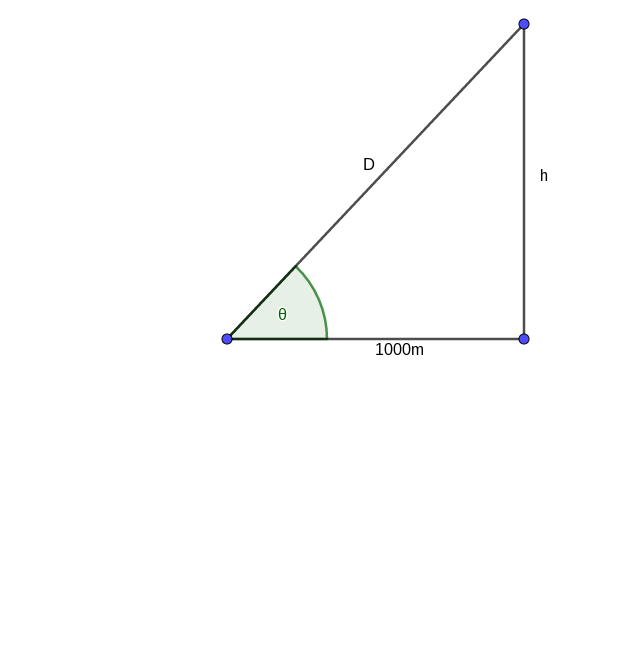Science:Math Exam Resources/Courses/MATH110/April 2016/Question 06 (a)
{{#incat:MER QGQ flag|{{#incat:MER QGH flag|{{#incat:MER QGS flag|}}}}}}
• Q1 (a) • Q1 (b) • Q1 (c) • Q1 (d) • Q2 (a) • Q2 (b) • Q2 (c) • Q2 (d) • Q3 (a) • Q3 (b) • Q3 (c) • Q4 (a) • Q4 (b) • Q4 (c) • Q4 (d) • Q5 (a) • Q5 (b) • Q5 (c) • Q5 (d) • Q5 (e) • Q5 (f) • Q5 (g) • Q5 (h) • Q5 (i) • Q6 (a) • Q6 (b) • Q7 • Q8 (a) • Q8 (b) • Q8 (c) • Q8 (d) • Q9 (a) • Q9 (b) • Q10 •
Question 06 (a) |
|---|
|
A television camera is positioned from the base of a rocket launching pad. The angle of elevation of the camera has to change at the correct rate in order to keep the rocket in sight. Also, the mechanism for focusing the camera has to take into account the increasing distance from the camera to the rising rocket. Answer the questions below. Make sure your solution includes a sketch that is labeled with the same variables used in your calculation. Your answer should be a numerical value, but you do not need to simplify it. Assume the rocket rises vertically and its speed is when it has risen . (a) How fast is the distance from the television camera to the rocket changing at that moment? |
|
Make sure you understand the problem fully: What is the question asking you to do? Are there specific conditions or constraints that you should take note of? How will you know if your answer is correct from your work only? Can you rephrase the question in your own words in a way that makes sense to you? |
|
If you are stuck, check the hint below. Consider it for a while. Does it give you a new idea on how to approach the problem? If so, try it! |
Hint |
|---|
|
Try drawing a picture to show the situation in the problem. It is usually helpful to label any changing quantity with a variable instead of a constant. Your picture should look something like the following. |
|
Checking a solution serves two purposes: helping you if, after having used the hint, you still are stuck on the problem; or if you have solved the problem and would like to check your work.
|
Solution |
|---|
|
We refer to the following picture: We want to compute . In order to compute this, we need to come up with an equation relating the rate we know, , to the rate we want to know, . By the Pythagorean theorem, we have
We want the derivative with respect to . Note that we should take the derivative before plugging in the value of or .
so
We would like to plug in and . However, we still need to figure out what value to plug in for . Once again, we will use the Pythagorean theorem. We get
So we plug in the values for , , and , and get
So we have that the distance is changing at a rate of . Answer: |
{{#incat:MER CT flag||
}}


















